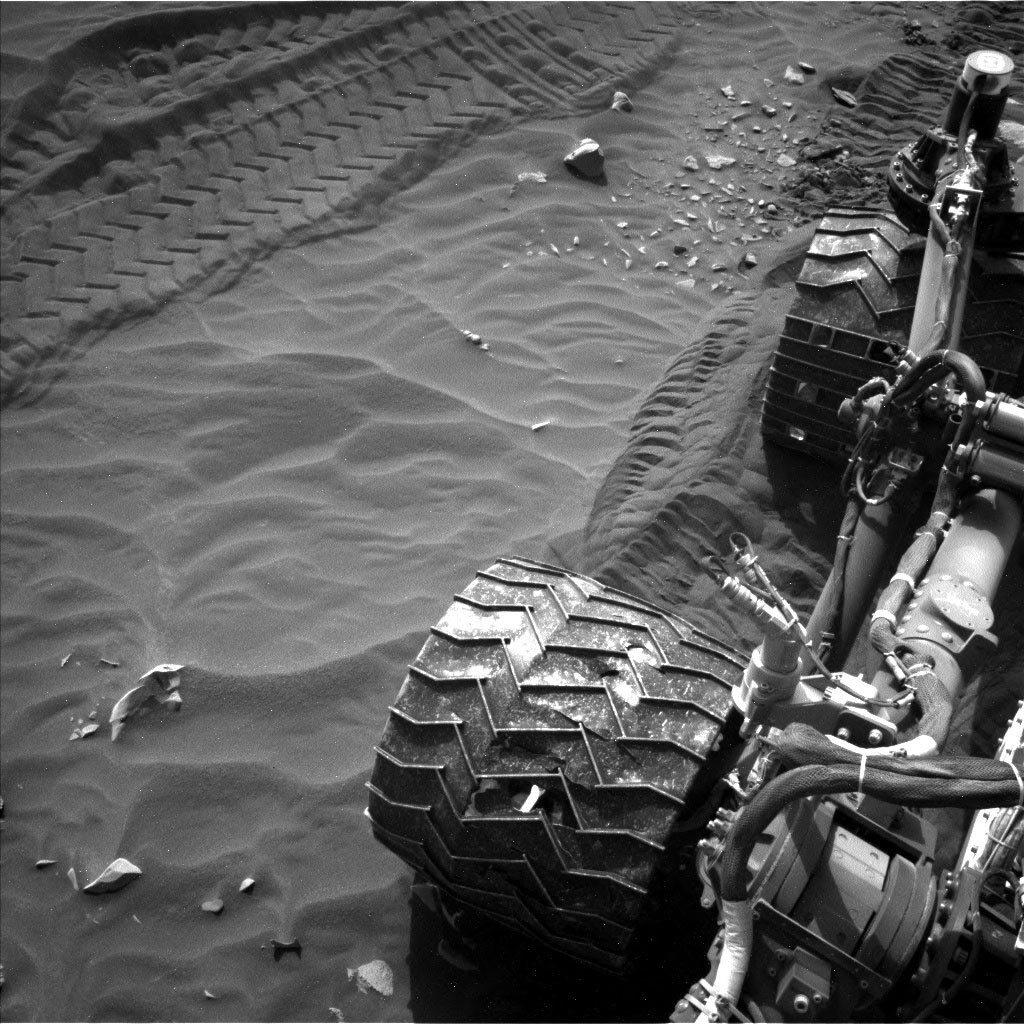3 min read

Due to some complex terrain, the rover’s last drive came up about ten meters short of the target destination. The rover’s unexpected parking orientation unfortunately will not allow our usual uplink direct from Earth. We can instead send the weekend’s commands through one of the orbiters at Mars, but a little later than planned. As a result, today’s plan had to be adjusted accordingly. Weekend plans typically include three sols of science, but all the activities for this weekend had to occur with the second and third sols only.
Luckily, the primary targeted science block on the second sol was increased from one hour to two hours, providing ample time to acquire data at this location before driving away. This block was filled with remote science activities to characterize sand and rocks in the rover’s workspace. A ChemCam LIBS activity was planned on bedrock target “Easter Skeld,” and two ChemCam RMI mosaics will be used to target the distant Gediz Vallis Ridge. Three Mastcam stereo mosaics were planned to document the surface around the LIBS target, to characterize some nearby sand ripples, and to extend coverage over interesting sedimentary textures in the target “Lugar Rocking Stone.” Mastcam will also be used to re-image wheel tracks that the rover made during its initial traverse of this area over a month ago (shown in the image above) to search for any wind-driven changes in the tracks. The untargeted science block on the third sol also contains a single ChemCam AEGIS observation. The team decided to forego weekend APXS activities due to the changes in the plan, but three sets of MAHLI images were still scheduled on soil target “Bains Beach,” a small rock named “Spiggie Beach,” and one of the rover’s wheels.
Over the weekend, the rover will also collect a large amount of data on current environmental conditions. The team planned three Mastcam “tau” images, a Mastcam image of the crater rim, and a Navcam “Line of Sight” image, all of which will be used to quantify the amount of dust in the atmosphere. A Navcam dust devil movie will also be acquired, and four Navcam movies will help characterize cloud motion. So, although today’s plan is not necessarily typical for a weekend on Mars, the rover still has a full workload!
Written by Mariah Baker, Planetary Geologist at Center for Earth & Planetary Studies, Smithsonian National Air & Space Museum







